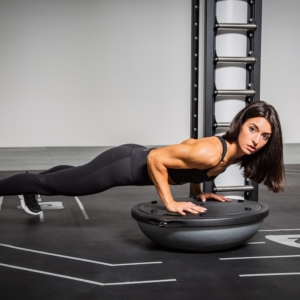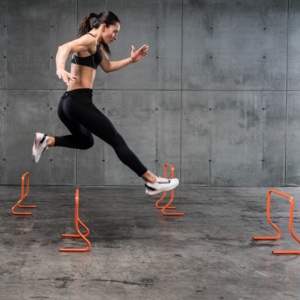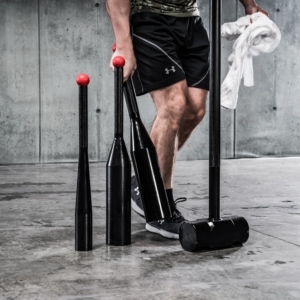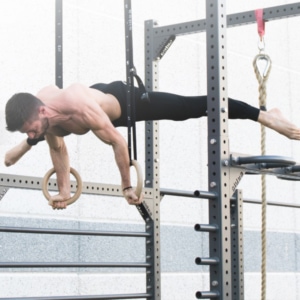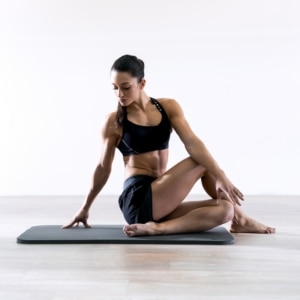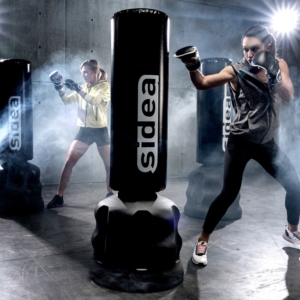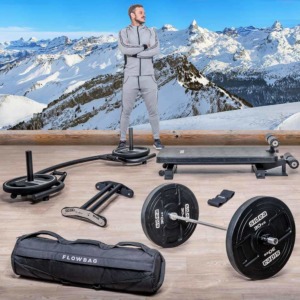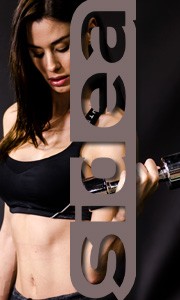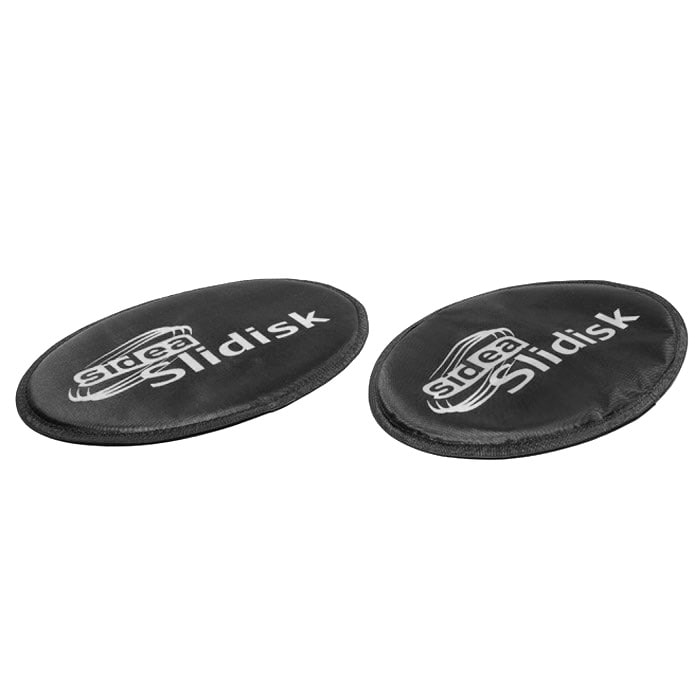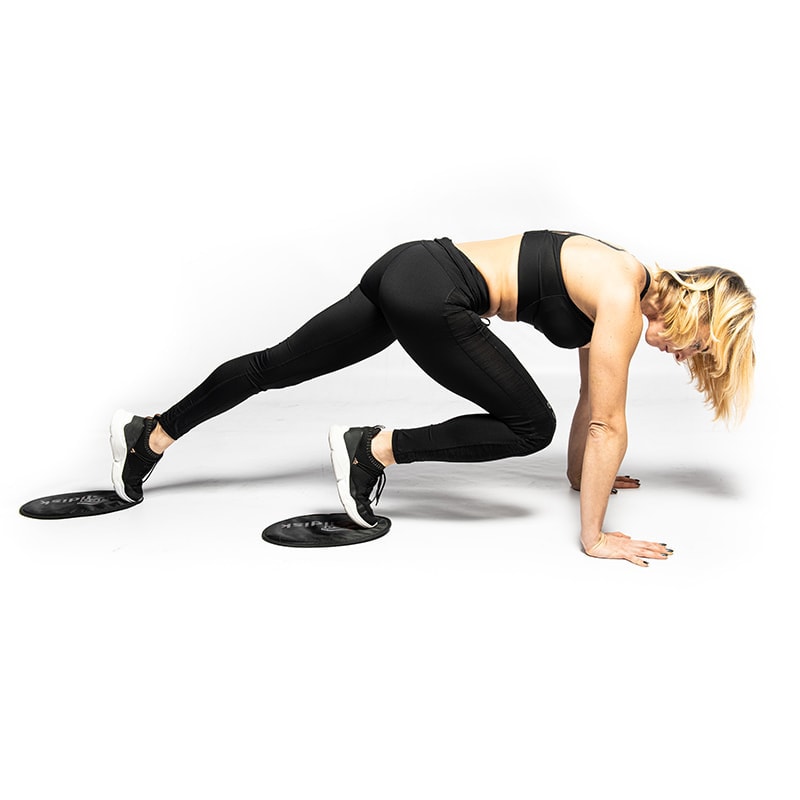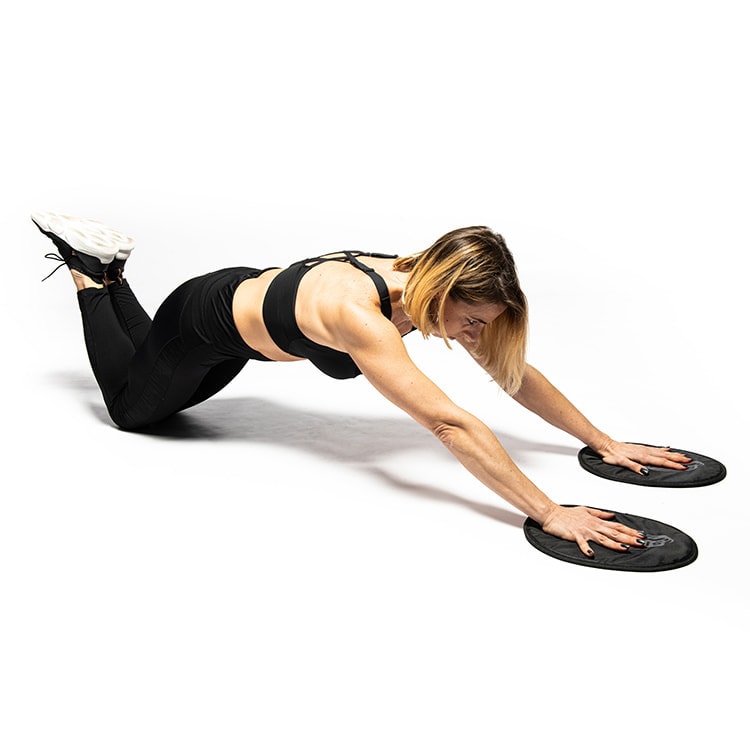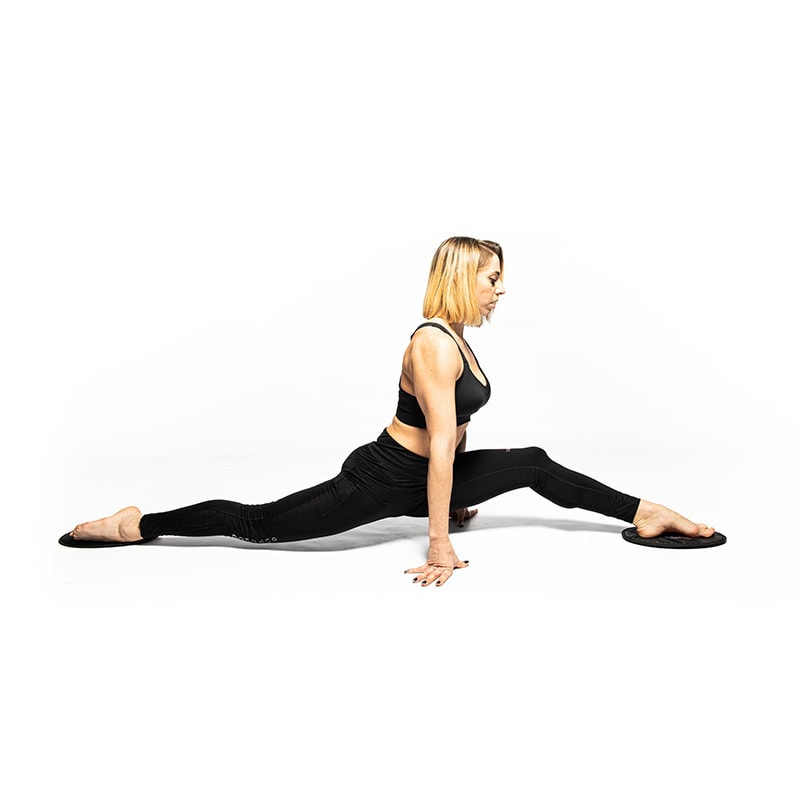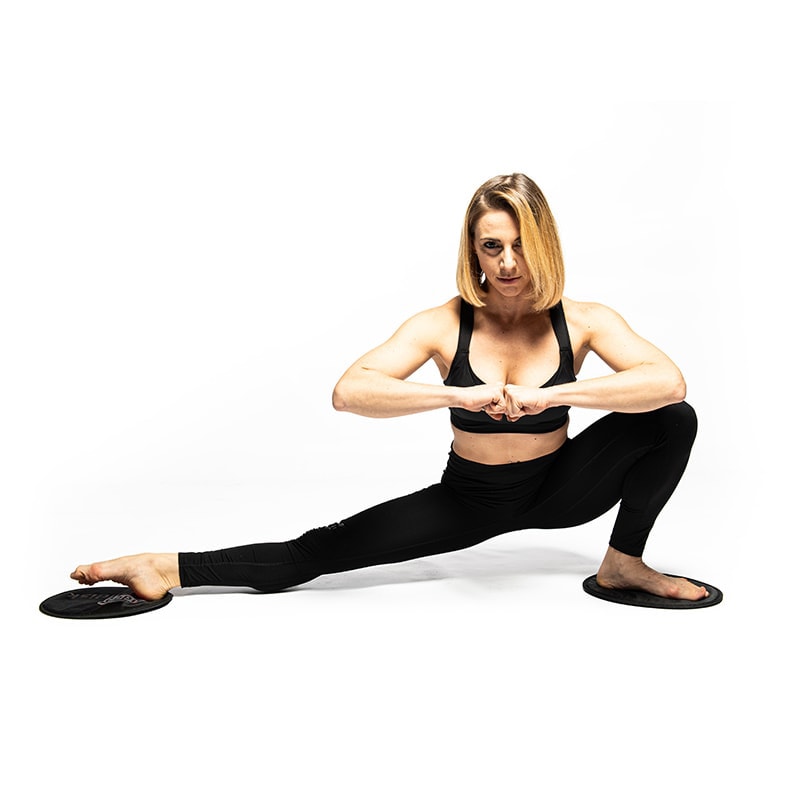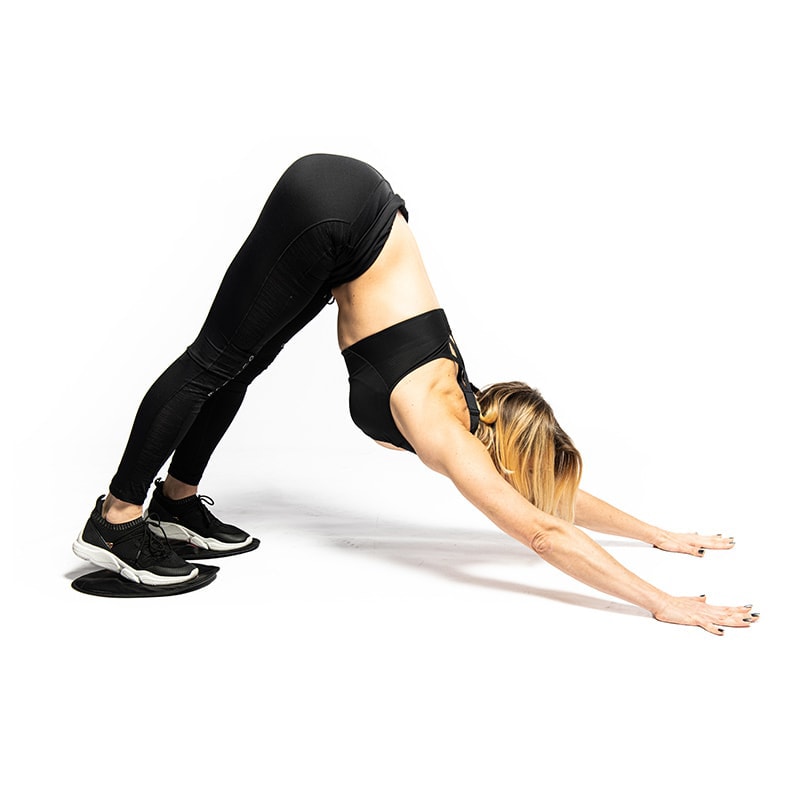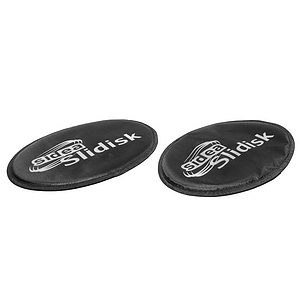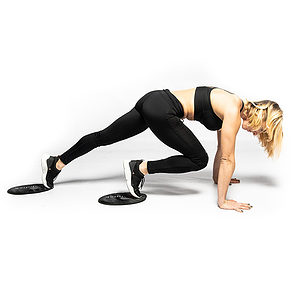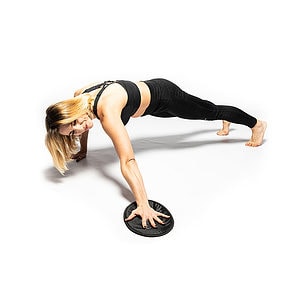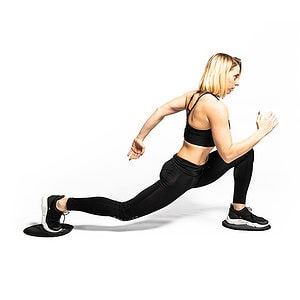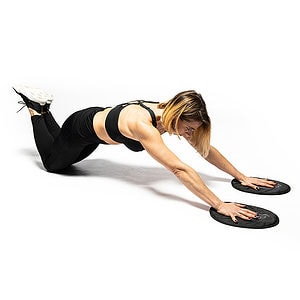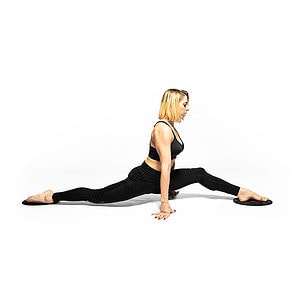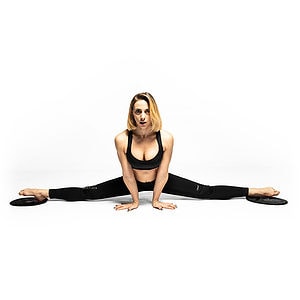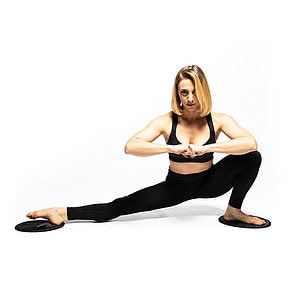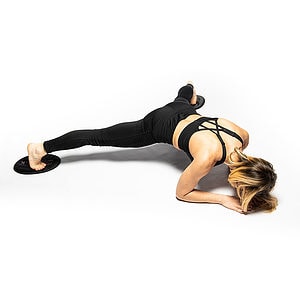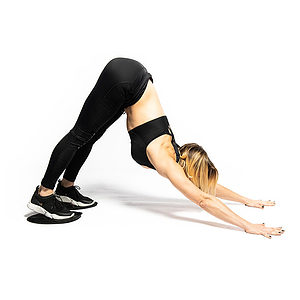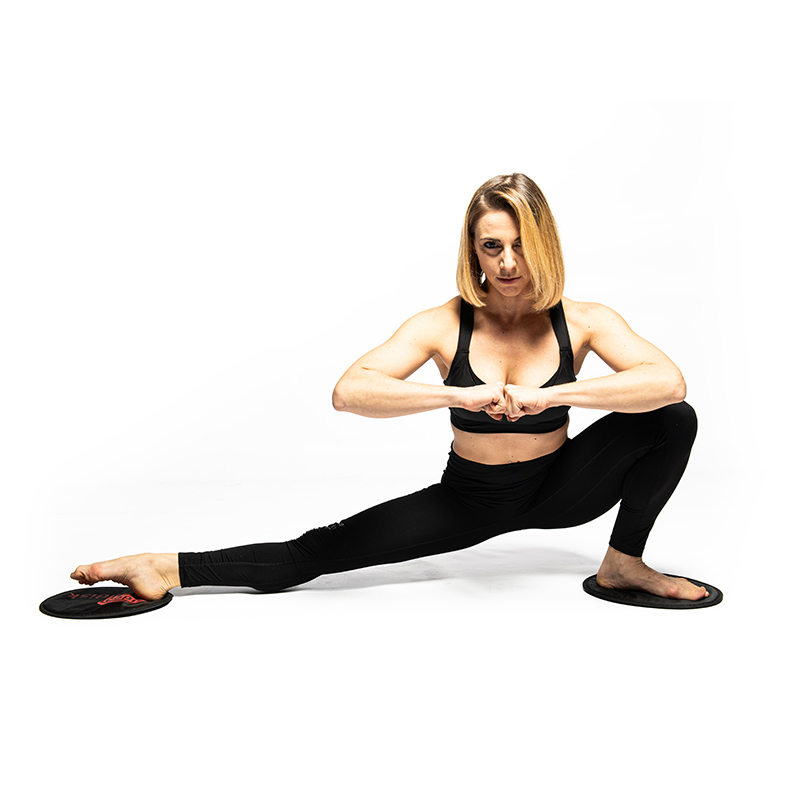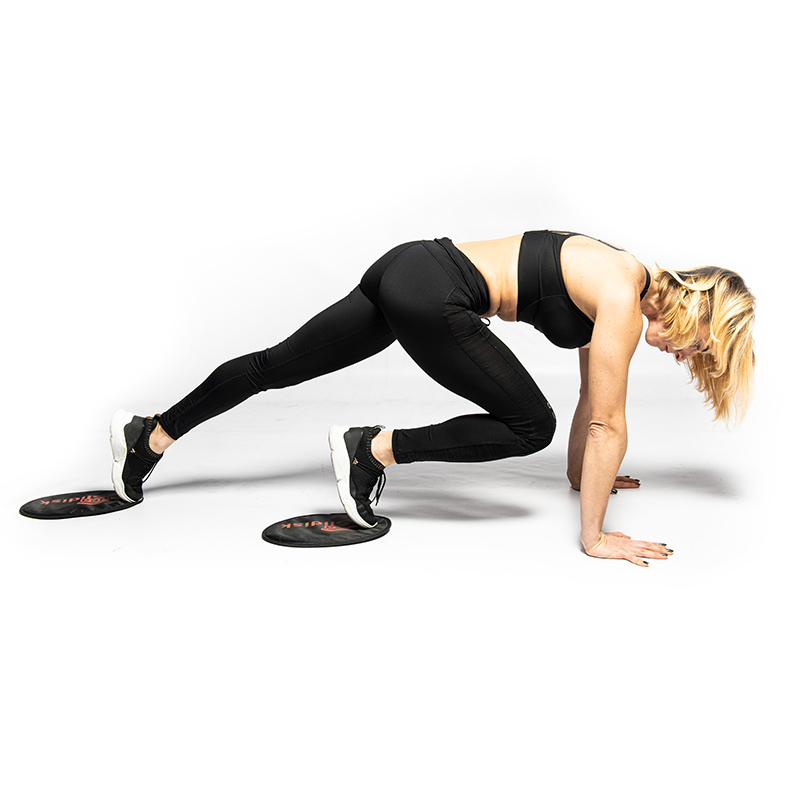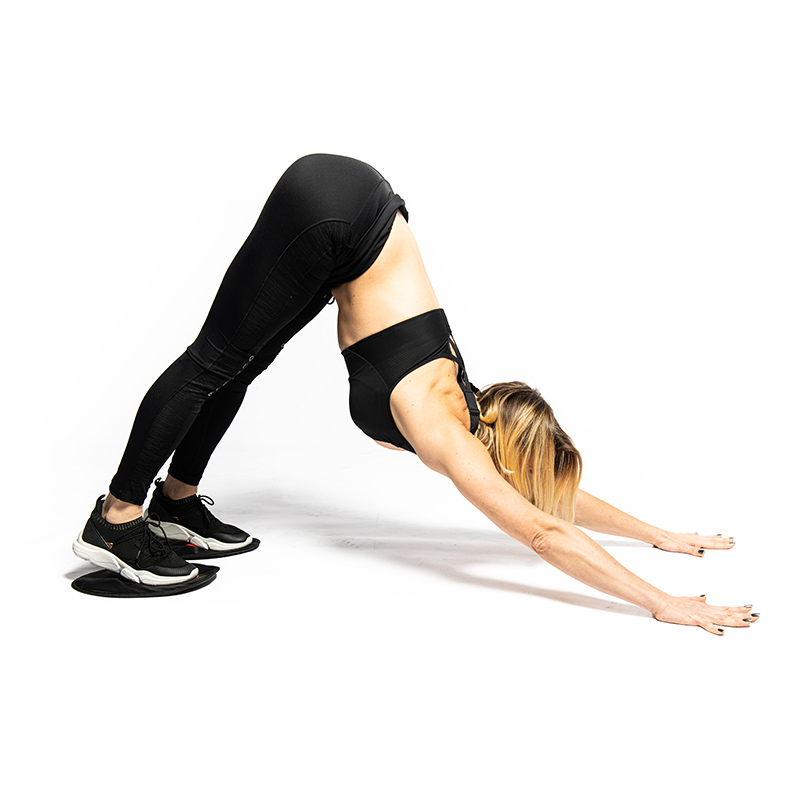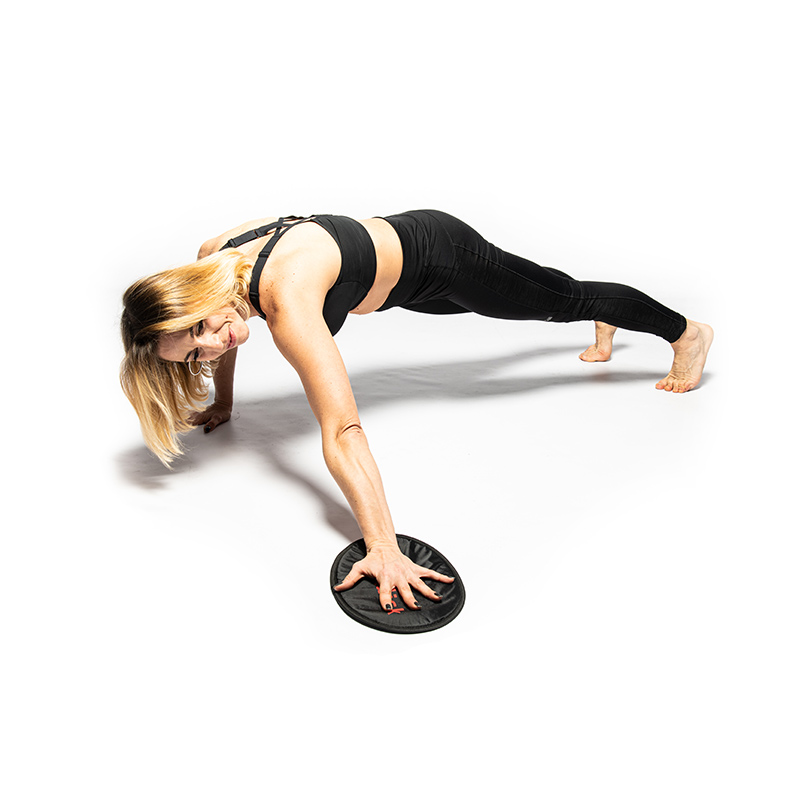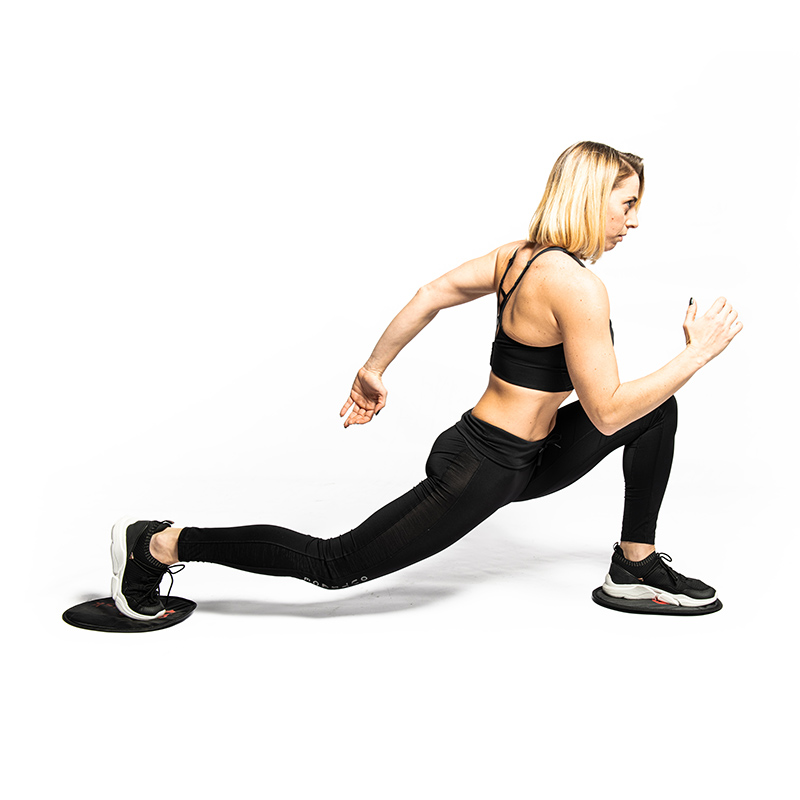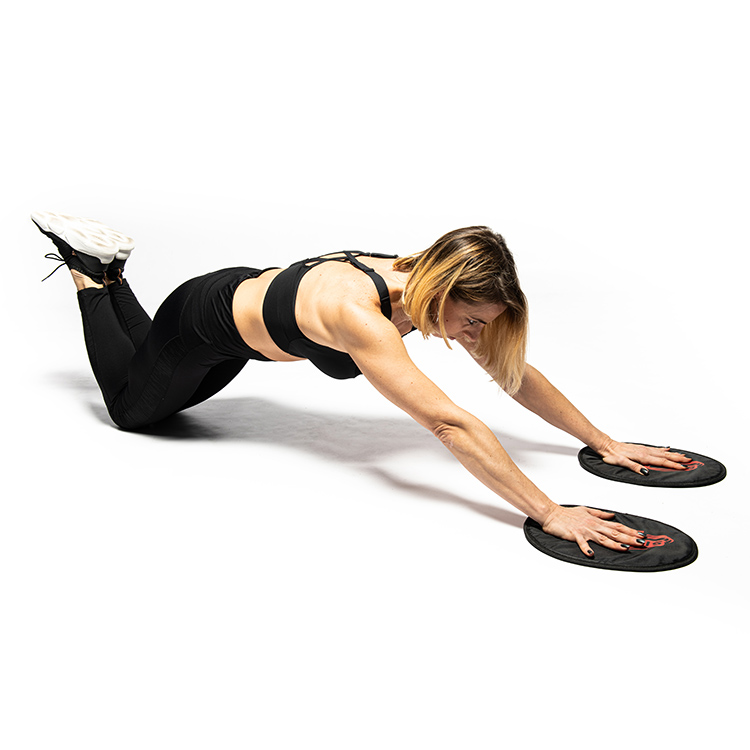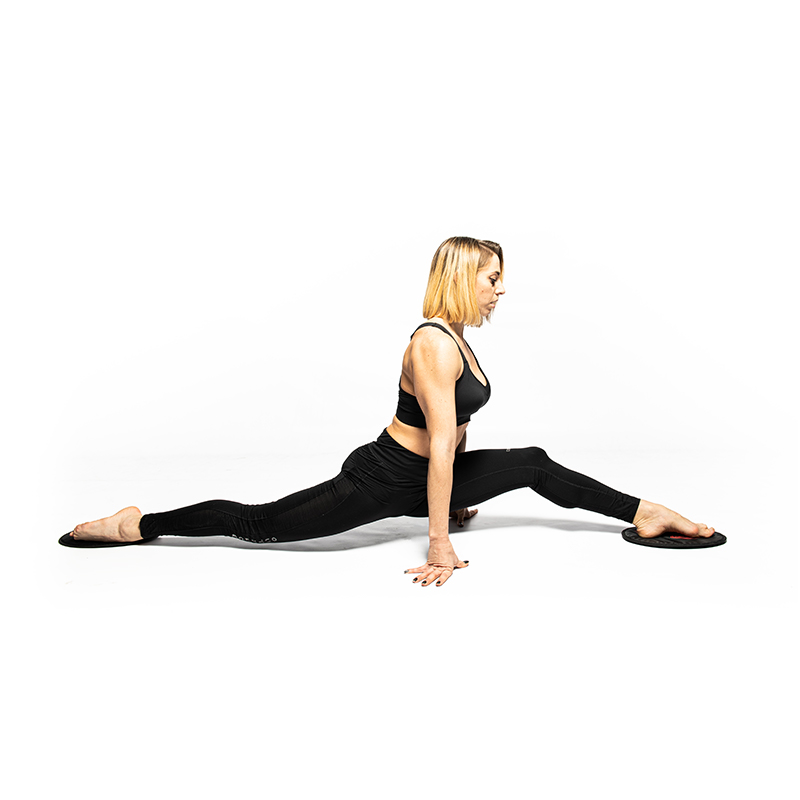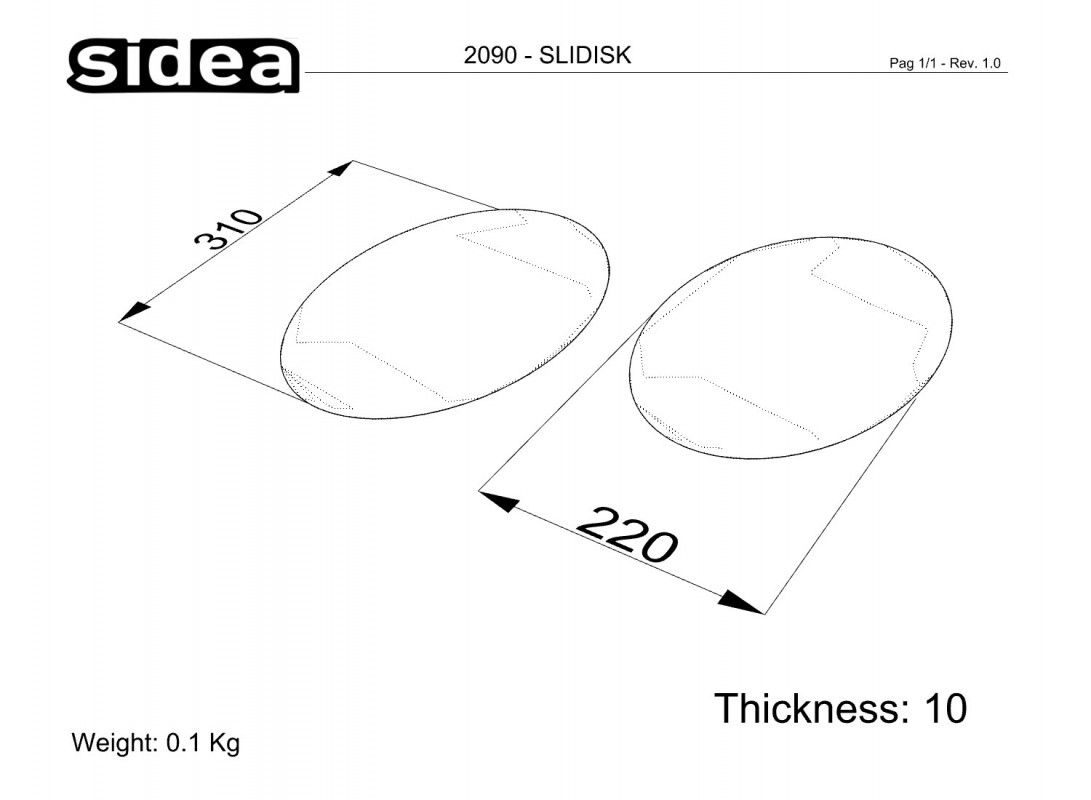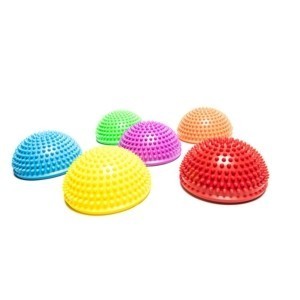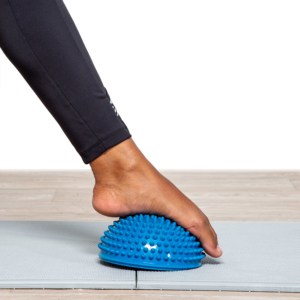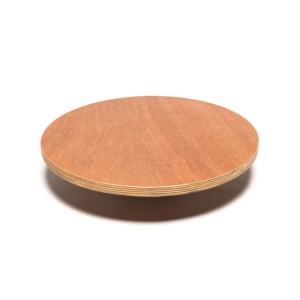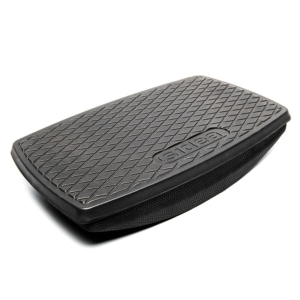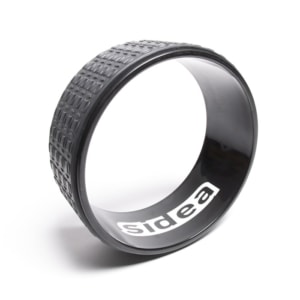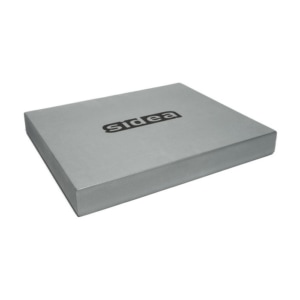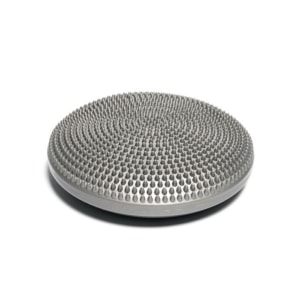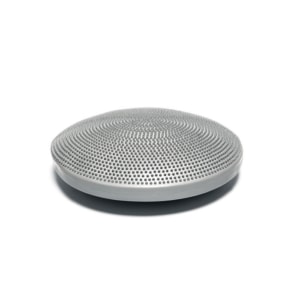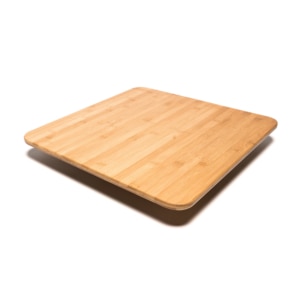SLIDISK – Pair of slider disks
Pair of slide training pads to be used under hands and feet, preferably bare for better proprioception and neuromuscular activation. The Slidisks, also called gliding disks, slide pads, functional sliders, allows you to slide easily on the floor to perform multiple exercises for muscle training, coordination, and multidirectional stretching.
They are oval-shaped disks made with a resistant nylon cloth and a light padding inside. They are extraordinarily versatile and favoring a high dynamic of movement, the Slidisk pads allow to engage all muscle groups, lower and upper, with particular effectiveness for the training of legs, buttocks, and hips. The fluidity of movement combined with high activation of the core and all stabilizing muscles makes the Slidisks useful for athletic preparation, both in conditioning and postural training.
With the Slidisks, every coach can introduce training protocols, personal or group, using a very affordable, space-saving, easily transportable, and extraordinarily useful tool.
Dimensions 310 mm x 220 mm.
Thickness 10 mm.
Examples of exercises:
- Side Slide: standing on the Slidisk, you perform an alternate side opening of the legs.
- Plank with side slide: in the side holding position, the foot behind is slid forward, passing sideways.
- Climber: from a plank position on the arms, you slide the Slidisk alternately by bringing feet and knees to the chest.
- Pike: from a V or dog face down position, you slide your feet in the direction of your hands.
- Arm Side slide: from plank on the arms, bend the upper limbs by sliding the Slidisk on the frontal plane, powerfully activating the pectorals and abdominals.
- Lunge forward, lateral, and back: instead of taking a step forward, you slide your foot forward to activate the adductor muscles as well.
- Abs slide: with the Slidisk under your hands, in a facilitated plank position (with your knees in support), you slide your hands forward and back, with arms outstretched and abdomen tight.
- Specific technical exercises for skating, alpine skiing, sports with changes of direction, sports with lateral movements, and pushes of the lower limbs.
Mobility:
- Sagittal and frontal splits: positioned under one or two feet, it facilitates the sliding of the feet, allowing you to concentrate on the correct position of the pelvis and legs.
- Prone butterfly legs: with slide under the feet, it allows the leg to spread laterally, making it easier to open.

